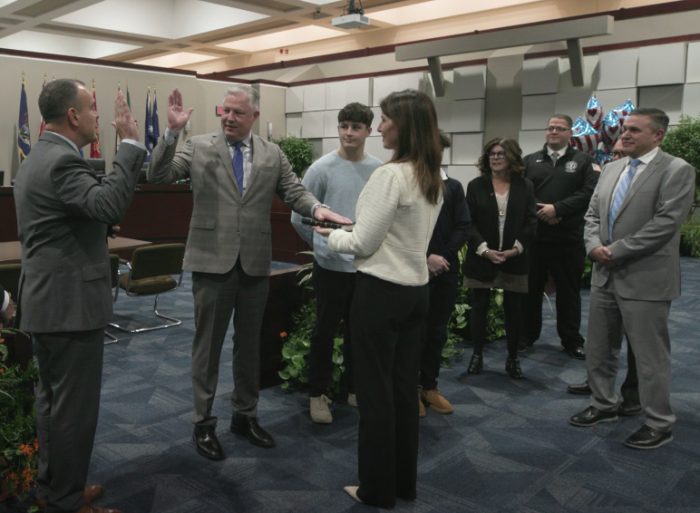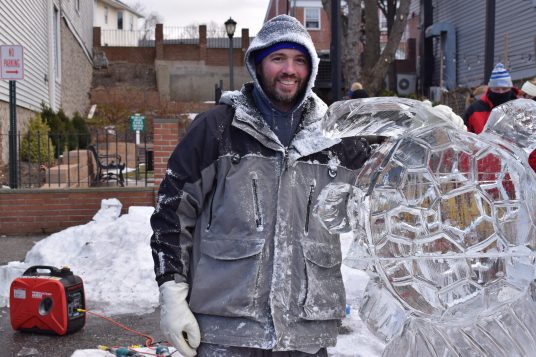By G.T. Scarlatos
Gov. Kathy Hochul (D) delivered the Fiscal Year 2025 New York State Executive Budget proposal at the State Capitol in Albany on Tuesday, Jan. 16, where she announced her record-breaking $233 billion spending plan that looks to allocate funds toward public safety, education and the influx of migrants coming to New York. It also closes a $4.3 billion deficit the state faced. Although the budget proposes a roughly 2% increase from the previous year, this burden won’t be falling on the taxpayer as Hochul made it clear there would be no new increases in state income tax.
In the address, Hochul focused on the needs of everyday New Yorkers with an emphasis on investing in initiatives concerning public safety and affordability.
“I stand by my commitment to fight the right fights for New Yorkers and pursue the common good,” Hochul said. “We must crack down on persistent crime, invest in children and families, and build the economy of the future. We’re taking action with common sense solutions that are simple, easy to implement. But the truth is, we can’t spend like there’s no tomorrow because tomorrow always comes.”
The governor outlined how the state will strengthen its public safety efforts by continuing to invest in initiatives that work with local communities, law enforcement and nonprofit groups to stem crime and gun violence statewide by devoting additional resources to youth mentorship programs, the police and district attorneys.
The budget includes $40 million toward tackling property crime and retail theft that looks to bring relief to small businesses by creating a new state police enforcement unit dedicated to driving down the recent spike in retail theft.
“Keeping New Yorkers safe is my number one priority,” Hochul said in the address. “Over the last few years we’ve made historic investments in gun violence prevention programs and it’s paid off. Shootings and murders are way down. Gun seizures are up.”
The spending plan also proposes to increase school aid by $825 million, just a 2.4% increase from last year, considerably less than the 7.7% average increase in aid that districts have received in recent years.
In an attempt to get ahead of the criticism she would potentially face, Hochul explained, “As much as we may want to, we are not going to be able to replicate the massive increases of the last two years. No one could have expected the extraordinary jumps in aid to recur annually.”
She also attributed the disappointing figure to a decade-long trend of declining school enrollment for students K-12, by saying, “It’s common sense to ensure that the schools are getting the appropriate money based on their enrollments today compared to what they were a decade and a half ago.”
The governor then recalled how she worked with legislators to bring the state’s reserves from 4% of the budget to a now historically high level of just over 15%. The reserves can be used to stabilize public spending or for one-time emergencies that may leave the state vulnerable.
In order to provide aid for what she referred to as a “humanitarian crisis,” Hochul plans to dip into the state’s reserves, allocating an extra $500 million of aid to support the approximately 13,600 asylum seekers arriving in New York each month, bringing state spending for the cost of shelter, social services and resettlement up to $2.4 billion.
Hochul addressed the politically-charged issue and called out for additional support from Washington, saying, “New York continues to carry the burden of sheltering more than 69,000 migrants. Since day one, I have said that it is ultimately the responsibility of the federal government to address this crisis. Congress — the House of Representatives in particular — and the White House must remain at the negotiating table until they restore the rule of law on our border, fix our asylum system and provide relief to states like New York who’ve been shouldering this burden for far too long,” Hochul said.
She continued addressing her efforts to combat the crisis saying, “I’ll be traveling once again to Washington to advocate for effective immigration reform, a stronger border and increased support from the federal government for New York. But until we see a change in federal policy that slows the flow of new arrivals, we’re going to be swimming against the tide.”
To see the whole budget presentation go to: budget.ny.gov.































